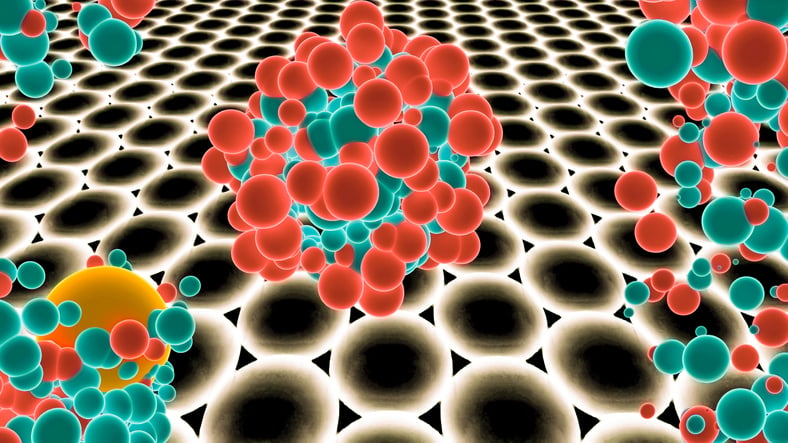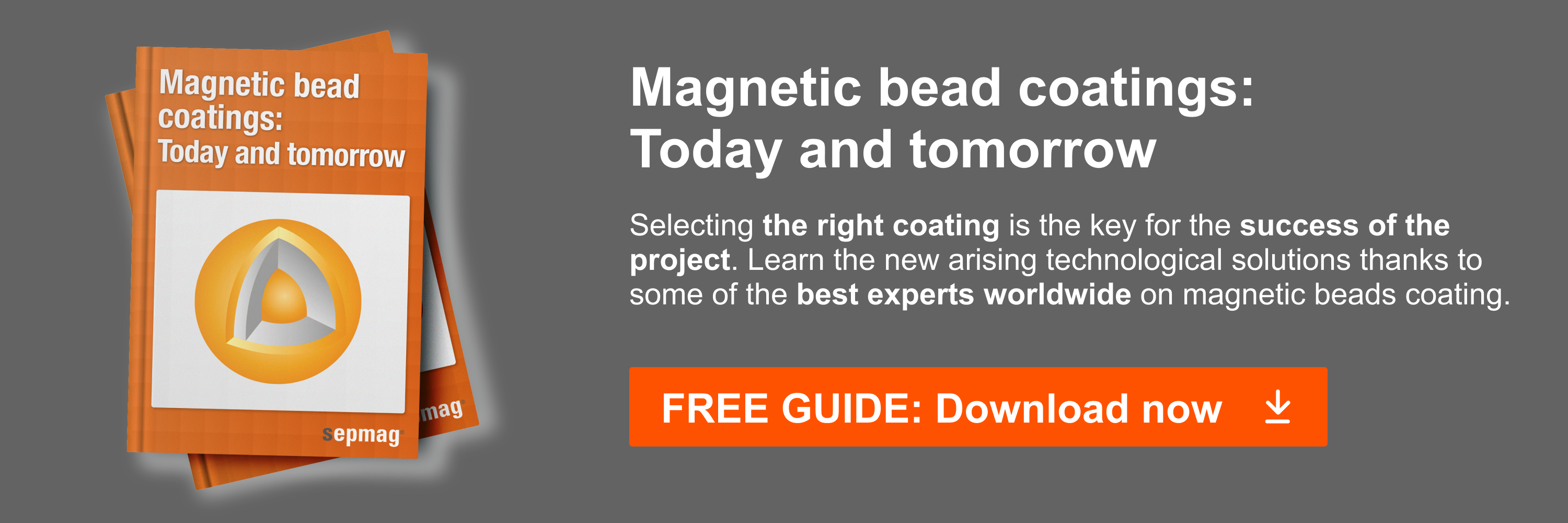Protein A beads like ELISA, Immunoprecipitation, antibody purification, and multiplex assays require the attachment of specific antibodies to a solid support such as a column, polystyrene plate, agarose bead, or superparamagnetic nanoparticle. There are a number of ways that antibodies are attached to solid supports. Some of these include:
- covalently bonding the antibody’s primary amines directly to the surface
- biotin-streptavidin affinity linkages
- protein A and G
The Use of Protein A beads
Direct covalent attachment of an antibody to the support surface is not always an option. It is highly dependent on the material and surface chemistry of the support. Chemical coatings can be applied to the surface to improve binding, but that isn’t always an option. Biotin-avidin affinity chemistry can be a very specific way to attach antibodies, but it has the added steps of biotinylation and avidin tagging. Protein A and G binding is a more general method of antibody functionalization because it works for a variety of IgG antibodies and isn’t antigen-specific. It is an inexpensive method to attach a wide selection of antibodies to solid supports. Magnetic protein A beads are particularly useful for immunoprecipitation protocols utilizing biomagnetic separation to improve the speed and efficiency of the recovery process.
Protein A is a surface protein originally found in the cell wall of Staphylococcus aureus bacteria. Recombinant protein A is commercially harvested from E.coli for practical use. It has four binding sites that bind to the Fc region of the IgG antibody. Human IgM, IgE, and IgA antibodies will not bind to protein A or G. Protein A is very specific to IgG antibodies. For this reason protein A is often used as a method of attaching IgG antibodies to the surfaces of magnetic and agarose beads used for immunoprecipitation. Protein A beads are commercially available for purchase. This eliminates time-consuming steps for the customer. He or she can simply purchase the protein A beads and incubate them with the desired IgG antibody.
IgG antibodies of many species bind to protein A; each has a different affinity depending on species and IgG subtype. Some IgG subtypes don’t bind well at all to protein A beads. This is why another cell wall protein called protein G is also used to functionalize solid support systems with IgG antibodies. The two proteins are similar in that they have special domains with IgG affinity, but their binding specificity differs slightly. Some IgG types which have poor affinity to protein A actually have high affinity for protein G. Sometimes a recombinant A/G protein is used to bind IgG antibodies to a solid support. For example, selective binding can be achieved using human IgG proteins. Human IgG3 only binds to G, and not A. Information about species-specific IgG subtype affinity to proteins A and G is readily available, and the corresponding antibodies are readily available from manufacturers.
Covalent and Noncovalent attachment points on Protein A magnetic beads
Covalent bonds are extremely strong chemical bonds in which electrons are shared between atoms. These bonds are near-irreversible. This is the type of bond that is used to conjugate protein A to the magnetic bead. The interaction between the antibody and protein A is a non-covalent interaction and is much weaker than a covalent bond. This is good because it is often desirable to recover the antibody after the isolation procedure. This would be difficult with a covalent bond, but it is a simple matter of changing the salt concentration or pH of the solution with a weak non-covalent interaction.
The chemistry used for the covalent attachment of protein A to the magnetic beads will depend on the material on the surface of the magnetic bead. One of the easiest methods of covalent attachment between a protein and a solid surface is EDC/NHS ester chemistry. If the surface of the magnetic bead is modified to have carboxyl groups then it is a simple procedure to add EDC and NHS to convert the carboxyl groups to NHS esters. Proteins have primary amine groups due to the presence of the lysine amino acid. Primary amine groups readily react with the NHS ester to form a covalent bond. Detailed protocols are available that detail buffers and optimal reaction conditions for this procedure.
Additional Applications of Magnetic Beads
The use of magnetic protein beads can be applied to further enhance protein identification. Magnetic Beads have numerous sensing capabilities as well, such as their magnetic property, low background noise, good dispersions, and highly biocompatible surfaces with regard to the immobilized recognizable bioreceptors. Optical sensing and electrochemical sensing devices can integrate magnetic material for sensing biological targets. Optical sensing with magnetic beads allows the incorporation of one of four sensing techniques: colorimetric, fluorescent, surface plasmon resonance (SPR), and surface-enhanced Raman scattering methods. Electrochemical methods can allow potentiometric, conductometric, amperometric, and impedance biosensing devices. In many cases, utilizing magnetic protein A beads instead of standard protein A beads, as it allows for further characterization.
Protein A beads, especially magnetic protein A beads, are a powerful tool in the biosciences because it is essential to be able to identify and purify a protein of interest in order to study it. Biomagnetic separation, in conjunction with magnetic protein A beads, has expanded the toolkit available to accomplish goals in both the research laboratory and in the clinic.
Related news
- Single Cell isolation
- Isolation of CTCs from centrifuged blood and immunomagnetic separation
- Bioanalytical method validation





